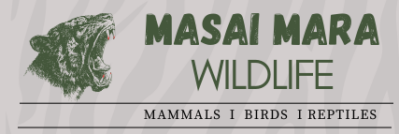- Common Names: Mountain Reedbuck, Chanler’s Mountain Reedbuck
- Swahili Name: Tohe ya milima
- Maasai Name: Enkakuluo
- Scientific Name: Redunca fulvorufula
- Size:
- Head-Body Length: 162 cm (64 inches)
- Shoulder Height: 75 cm (30 inches)
- Gestation: 32 weeks
- IUCN Status: Near Threatened, primarily due to habitat loss and hunting pressure.
Recognition and Appearance
The Mountain Reedbuck is a slender and elegant antelope adapted to life in higher altitudes, with a darker, greyer coat compared to its cousin, the Bohor Reedbuck. This thicker coat helps it withstand the cooler temperatures at higher elevations. Males are smaller than females, and only males bear forward-curving horns, which set them apart from females.
The bushy tail of the Mountain Reedbuck is a prominent feature, dark above and white underneath, which, like rabbits, is used as a signaling mechanism to the rest of the herd when danger approaches.
Habits and Behavior
Mountain Reedbuck are most active during dawn and dusk, foraging during these cooler periods to avoid the midday heat. They typically form small herds of around 3-7 individuals, usually consisting of females and their young, led by a solitary adult male. Males, when mature, leave the group to form bachelor herds.
Their behavior is particularly fascinating during encounters with predators. When threatened, they engage in a behavior known as stotting (or pronking), where they leap into the air with stiff-legged jumps, showcasing the white underside of their tails. This behavior not only alarms the herd but also signals to predators that the individual is fit and fast, making it a more challenging target to catch.
Diet and Feeding Habits
Mountain Reedbuck are grazers, primarily feeding on grasses and herbs. Their habitat preferences, which include well-drained grassy and rocky hillsides, provide them with the nutrition they need. They may sometimes browse on herbs, especially during the dry season when grass becomes scarce.
Where to Find in Masai Mara
In the Masai Mara, Mountain Reedbuck are typically found on hilly, rocky outcrops with open grassy areas. Their habitat selection is dictated by the need for rocky slopes that provide shelter and grazing opportunities.
Conservation Status
The Mountain Reedbuck is classified as Near Threatened on the IUCN Red List. Population declines are linked to habitat loss, hunting, and competition with livestock for grazing areas. Efforts to conserve their habitat, particularly in protected areas like the Masai Mara, are crucial to stabilizing their populations.
Interesting Facts
- Mountain Reedbuck exhibit monogamous pairing, with males fiercely guarding their small territories.
- Their stotting behavior is a remarkable sight, demonstrating their agility and strength in escaping predators.
- Despite being fairly small, they are highly territorial, with males scent-marking their ranges to fend off rivals.
This beautiful and shy antelope continues to survive in the Masai Mara and surrounding areas, thanks to ongoing conservation efforts to protect their habitat. While sightings can be rare due to their elusive nature, they offer a rewarding experience for those lucky enough to spot them.
